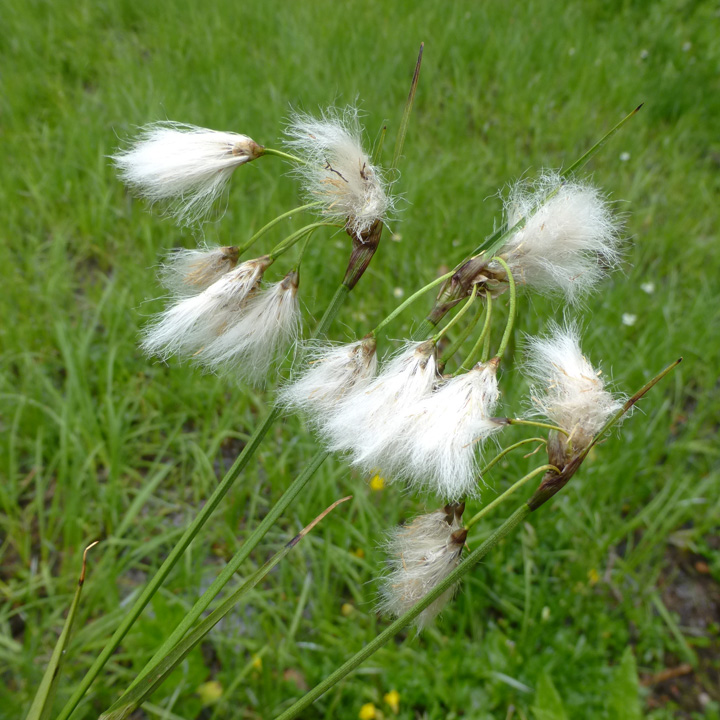Eriophorum
|
Family: Cyperaceae |
Herbs, perennial, cespitose or not, rhizomatous. Culms solitary or not, trigonous or terete. Leaves basal and cauline; cauline leaves sometimes bladeless sheaths; ligules present; blades filiform to flat with filiform tip, to 25 cm × 2.5-4 mm. Inflorescences terminal, spikelets solitary, erect or (1-)2-10(-30) in subcapitate or subumbellate panicle; involucral bracts 1-several, scalelike or blade-bearing and leaflike throughout. Spikelets: scales (10-)20-200, spirally arranged, each subtending flower, or proximal empty. Flowers bisexual; perianth persistent, of (8-)10-25 hairlike, smooth bristles, or very rarely 6 antrorsely barbed bristles, greatly elongate, essentially straight, usually obscuring most of scales in spikelet, much longer than achene; stamens 1-3; styles deciduous, linear, 3-fid. Achenes trigonous. In some species the North American populations are considered to be conspecific with Eurasian populations; differences in achene micromorphology and isozyme data suggest that these relationships should be investigated more thoroughly.
Scales spirally arranged, scarious, not awned; fls perfect, each in the axil of a scale; perianth of numerous (more than 10) persistent bristles, these much elongate at maturity, so that the mature spikelet forms a dense, cottony tuft commonly 2-4 cm; stamens 1-3; style trifid, deciduous; achene unequally trigonous, often with a short, slender stylar apiculus; perennial herbs of wet places, with grass-like lvs, the upper sheaths often bladeless; spikelets many-fld, solitary and terminal or few-many in an umbelliform cyme or head-like cluster; foliaceous bracts present in spp. with more than 1 spikelet. 20, N. Hemisphere. Gleason, Henry A. & Cronquist, Arthur J. 1991. Manual of vascular plants of northeastern United States and adjacent Canada. lxxv + 910 pp. ©The New York Botanical Garden. All rights reserved. Used by permission. |

